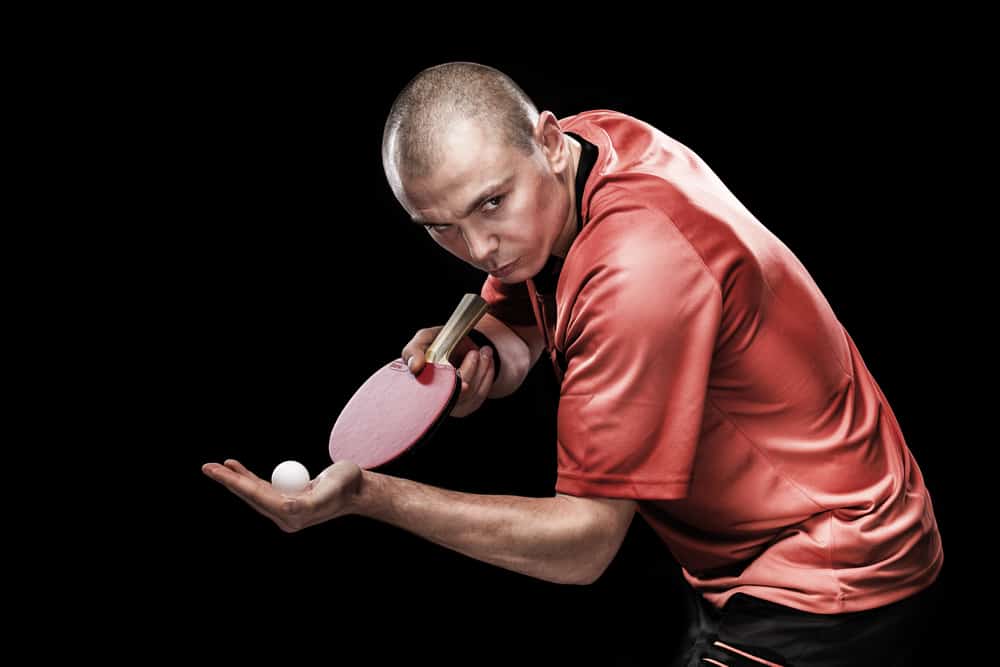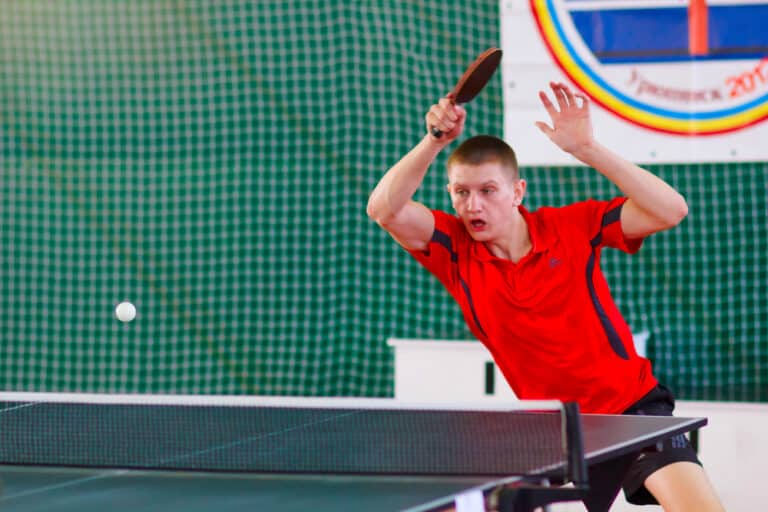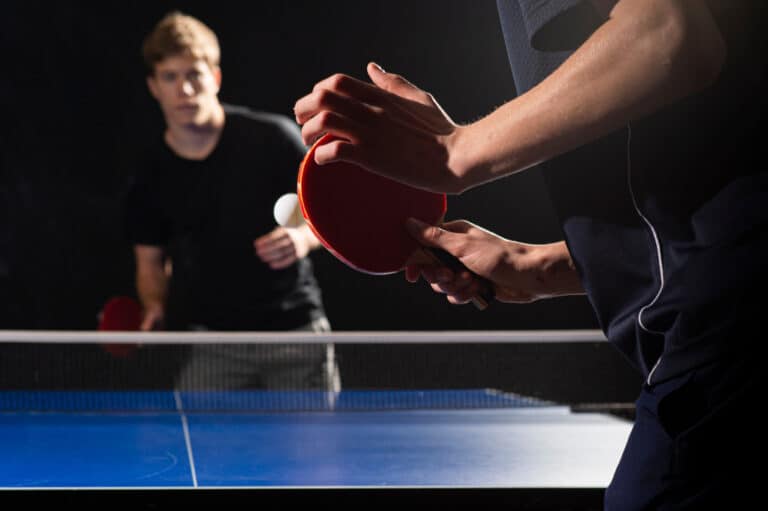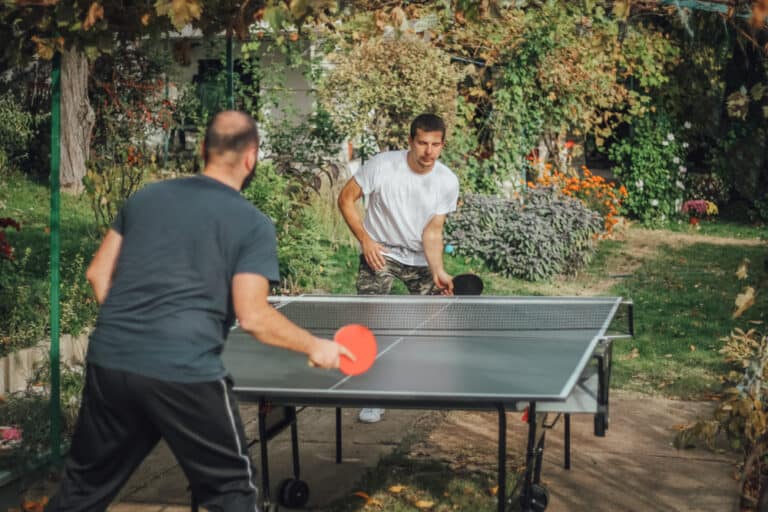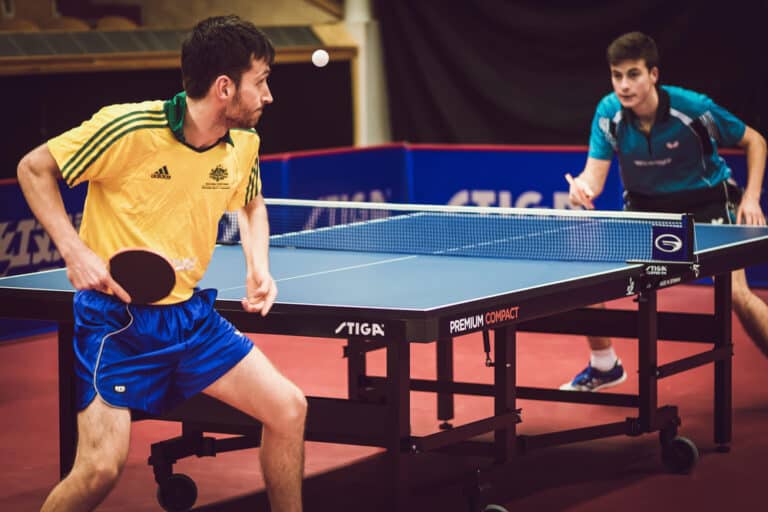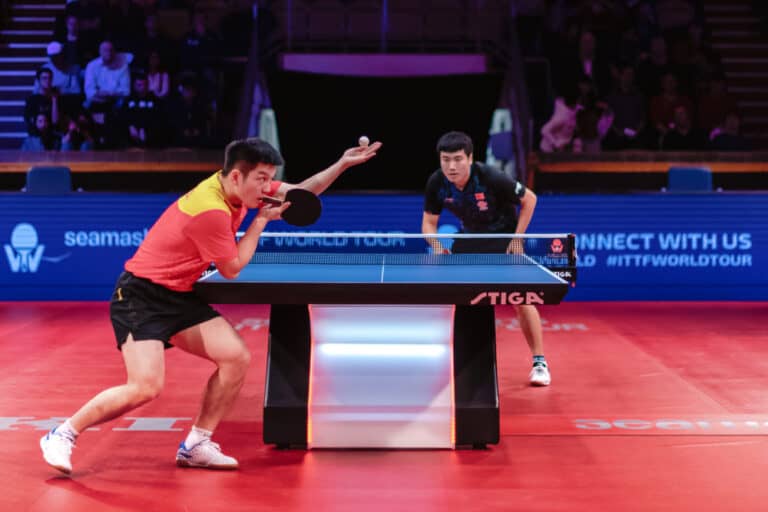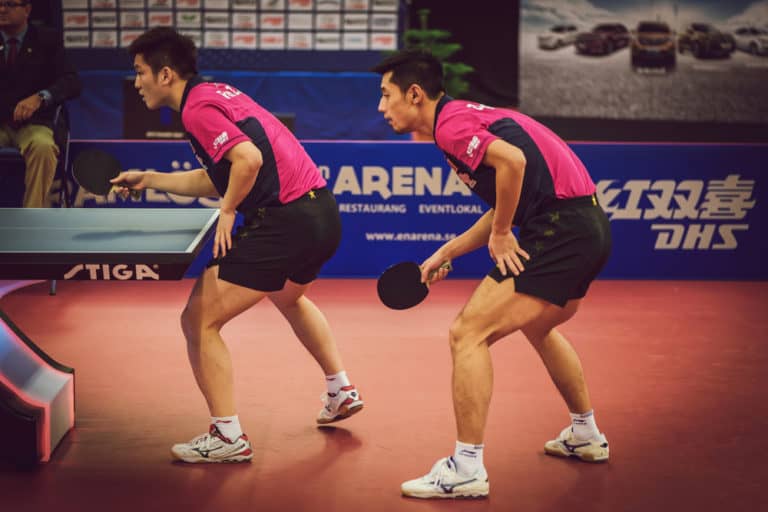Where Do You Serve In Table Tennis?
Every table tennis game begins with a serve. Knowing how to get that first point could give you enough momentum to win the game. To make that happen, you need to know how to serve, when to do it, and, more importantly, where to stand when you do it.
In a singles match, you can stand anywhere you want when you serve as long as you’re standing behind the end line of the table. In a doubles match, you must stand on the table’s right side. It’s unusual for players to stand far behind or too much to the sides of the table.
Making the perfect serve takes more than standing in the right place: you need to know the rules and issues that could arise when serving, such as learning how many attempts you have at it. We’ll discuss that and more below.
How Do You Serve In Table Tennis?
The right way to serve in table tennis is simple. Hold the ball with an open palm, throw it at least 6 inches in the air, and hit it, forcing it to go down. The ball has to land on your side of the table before bouncing on the other side.
A successful serve will hit your side of the ping pong table and then your opponent’s side. Nevertheless, the ball can only bounce once on your side of the table. There are no restrictions regarding how many times the ball can hit your opponent’s side.
What Are The Serving Rules In Table Tennis?
There are three essential serving rules ping pong: first, throw the ball straight up; second, don’t hit the net with the ball when you serve; third, you can touch the table with your playing hand – but not with your non-paddle hand.
When there’s no referee, players must follow an honor system: they have to solve disputes and find common ground to stand on when dealing with disagreements. When that’s not possible, players need to play that point again.
Where Do I Need To Stand During A Serve In Table Tennis?
A player can stand anywhere they want as long as they are behind the end line of the table when playing a singles match. In that scenario, the ball must be visible and above the table. The serving player must stand on their right side in a doubles match.
Players usually stand in the same place when serving in a doubles match, even if you can stand anywhere you want in a singles match. There’s a reason for that: a good serve relies on muscle memory, and constantly changing where you stand can mess up your technique.
Can You Serve From The Side In Table Tennis?
You can serve from wherever you want as long as you’re behind the end line of the table. Nevertheless, going far away to the side could prove counterproductive when serving: having too much distance between the table and you could make the serve difficult.
You can only serve that way when playing a singles match. In a doubles match, you have to stand on the right side and strike the ball down, so it bounces on your side of the table and then on the right side of your opponents’.
Where Does A Serve Land In Table Tennis?
It doesn’t matter where the ball lands during a serve if it bounces on your side of the table first and on your opponent’s side second. The ball must bounce only once on your side of the table and never touch the net.
When the ball touches the net, you must serve again, no matter how many times it happens. That’s the only time you have to do it again without losing one of your two serve attempts.
In a doubles match, you must serve from the side and have the ball land on the right side of your opponent’s table after it bounces on your side for the first time. That’s the only difference between serving in a singles match and a doubles match.
How Many Serves Do You Get In Table Tennis?
You have two serving attempts before losing the point. Nevertheless, you forfeit the point if you touch the table with your non-paddle hand, no matter how many shots you have left. The ball hitting the net forces a do-over without the serving player losing attempts.
It’s essential to remember forcing a do-over when hitting the net only applies to serves. After the non-serving player hits the ball successfully, the ball can touch the net without having to start again.
That means you get the point after the serve if you hit the ball, making it bounce on your side of the table, touch the top of the net, and spin back to your side – even if your opponent couldn’t do anything about it!
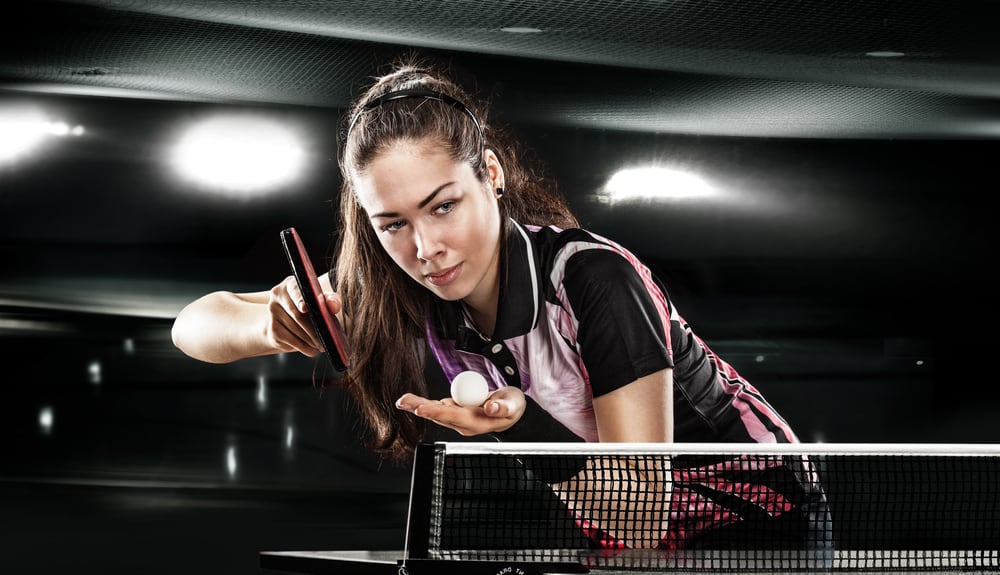
What Happens If You Touch The Table In Table Tennis?
That depends! You can touch the table with your paddle hand (i.e., the one you use to hold your ping pong paddle). Nevertheless, you can’t touch your table with your non-paddle hand – and you forfeit both the serve and point when you do.
You can’t touch the table with your non-paddle hand even after serving because that means you forfeit the point. The same rule applies even if the other player makes the serve. It’d be wise to avoid touching the table with your non-paddle hand, no matter the circumstances.
At the same time, you can touch the table with any other part of your body that isn’t your non-paddle hand – as long as you don’t move the table. If that happens, you forfeit the point.
Can I Serve A Matching Point In Table Tennis?
Absolutely! There are no rules against winning a match if you score a point during a serve. According to the rules of table tennis, your opponent doesn’t have to serve for you to win, even if you’re 11-0 after serving.
Nevertheless, the honor system applies to friendly matches and any other type of game without a referee. Because of that, it’s essential to discuss possible disagreements before starting a game.
What Is An Illegal Serve In Table Tennis?
Any serve where you cup the ball or keep it below the table’s surface level is illegal. Touching the table with your non-paddle hand also constitutes an illegal move when serving. Not striking the ball down is also the wrong way to do it.
To land a successful legal serve in ping pong, follow these three simple rules: hold the ball with an open palm, throw it 6 inches in the air, and strike it down. Ensure the ball hits your side of the table and then your opponent’s side. That’s a good serve!
Conclusion
In a singles match, you can stand anywhere you want as long as you’re behind the end line of the table. At the same time, making the ball hit your side of the table first and your opponent’s side second is a must to land a good serve. You have to do it over if the ball touches the net when serving. If your non-paddle hand touches the table, you lose the point.

